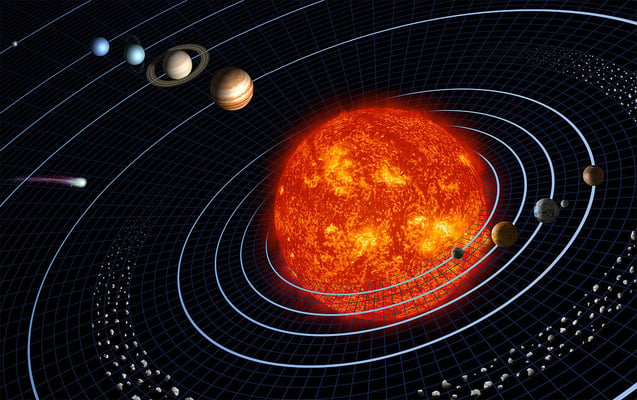Strange Planets in the Universe (Part-One)

Astronomers have been continually grazing millions/billions of light-years away from Earth through the dark nights to observe different phenomena in the universe and may that lead us to solve the riddles of the open but secret universe. Areas on topics like a black hole, Earth-like habitable exoplanets, star system, and so on are established as a hot topic through the centuries.
NASA has established 4,164 exoplanets with 5,220 candidates and 3,085 planetary systems. Among those 1,394 are like Neptune-like exoplanets, 1,312 are nothing but gas giants, 1,292 are super-Earth (more massive than Earth but lighter than gas giant), 160 are terrestrial (rocky with iron-rich cores like Venus, Earth, and Mars of our solar system), and 6 are of unknown types.
Also Read: Strange Planets in the Universe (Part-Two)
Thes numbers may have imposed you to think on the topic of a habitable exoplanet and you may have started to think how can there be the only planet like Earth that fit for us and support life in the vast universe. I was!
Planets in Our Solar System
For any heavenly bodies to be considered and categorized as a ‘Planet’, astronomers and scientific community have long ago established a rule that was adopted by the International Astronomical Union (IAU) in 2006. Those established criteria are:
-
It must orbit a star and have its own orbit or path.
-
It must be big enough to have enough gravity to maintain it into an almost spherical shape.
-
They must be big enough that its gravity cleared away any other objects of similar size near its orbit around the Sun.
Considering these criteria, our solar system currently has 8 planets. Pluto meets criteria 1 and 2 but does not meet criterion 3, so the International Astronomical Union (IAU) decided that bodies line Pluto will be called dwarf planets. Therefore, IAU in 2006, included Pluto, and Eris and its moon Dysnomia in the Minor Planet Catalogue, and gave them the tag of official minor planets. This makes Pluto no more a major planet system of our solar system. Prior to this, Pluto is considered a planet system of our solar system, and our solar system has 9 planets in total.
It is believed that our solar system was formed about 4.6 billion years ago by the process of gravitational collapse of a giant interstellar molecular cloud.
The other eight planets- Mercury, Venus, Earth, Mars, Jupiter, Saturn, Uranus, Neptune, meets the above-mentioned criteria and are still classified as a major planet system of our planet system.

Uranus’ axis is so tilted, it actually looks like the planet is rotating on its side. One theory is that a body the size of our Earth collided with Uranus a long time ago, radically throwing off its rotation.
Overall, our solar system consists of 8 planets, 5 dwarf planets, more than 200 moons, 958,706 asteroids, 3,646 comets.
Exoplanet where it Rains Iron
A team of researchers using European Southern Observatory (ESO)’s Very Large Telescope (VLT) observed an exoplanet where temperatures climb above 2500 degrees K and they suspect it rains iron in that exoplanet. A research paper describing the work was published in the journal Nature on 11 March 2020.
Researchers explained that because of the higher difference in day-night temperatures, this anomalous iron rain falls at WASP-76b.
The team detected an asymmetric atmospheric signature in the ultrahot exoplanet, named WASP-76b, which is located in the constellation of Pisces.
David Ehrenreich, a professor at the University of Geneva in Switzerland and the leader of the study said, “One could say that this planet gets rainy in the evening, except it rains iron.”

This iron raining planet, WASP-76b, only shows its one face (its day side) to its parent star and another side ( cooler night side) remaining in eternal darkness. Hence, on its day side, WASP-76b receives very-very hot radiations from its star. Due to the hot radiations, its molecules separate into atoms, and metals like iron evaporate into the atmosphere. Now due to the extreme temperature difference between the day and night sides of itself surface, a strong wind from its ultra-hot day side flow towards the cooler night side where temperatures decrease to around 1500 degrees Celsius.
A Planet with Three Suns
A team of astronomers observed a planet system in an exotic system- a planet in three star system. They used the SPHERE instrument on European Southern Observatory (ESO)’s Very Large Telescope (VLT) and imaged the Jovian planet in a triple-star system. Until now, orbit of the planet in such a triple-star system had been expected to be unstable due to complex and changing gravitational attraction and this may result in the removal of the planet from the system. But this planet in a triple-star system demonstrated that they somehow survive.
What more interesting is that this planet world, HD 131399Ab, may experience constant daylight or may even have triple sunrises and sunsets.
The observed three components of the triple-star system are named, in decreasing order of brightness- HD 131399A, HD 131399B, and HD 131399C respectively, where the planet orbits the brightest star so is named HD 131399Ab.

A research paper describing the study was published in the journal Science on July 7, 2016.
